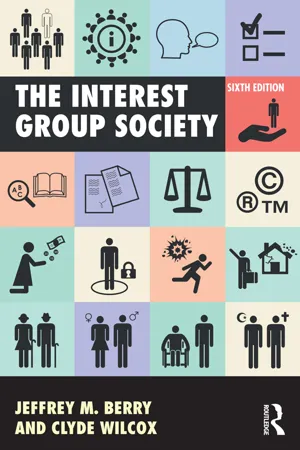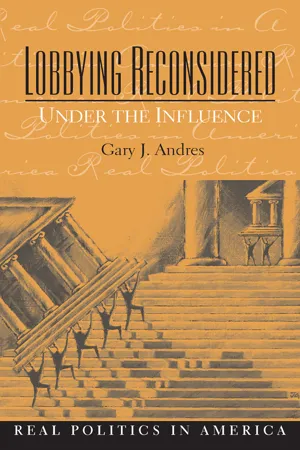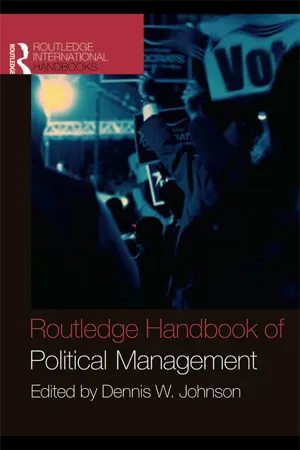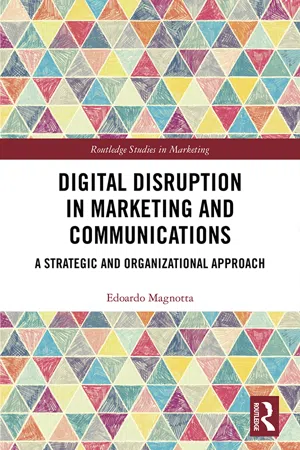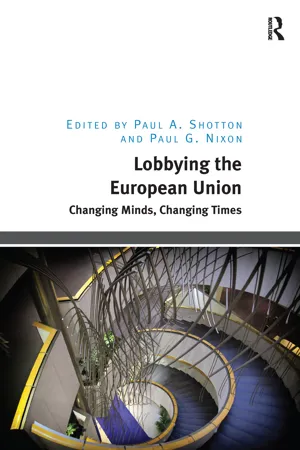Politics & International Relations
Lobbyists
Lobbyists are individuals or groups who work to influence government decisions on behalf of specific interests. They often engage in activities such as advocacy, persuasion, and networking to promote their causes and gain access to policymakers. Lobbying can take place at various levels of government and is a common practice in many political systems.
Written by Perlego with AI-assistance
Related key terms
Related key terms
1 of 4
Related key terms
1 of 3
10 Key excerpts on "Lobbyists"
- eBook - ePub
A Citizen's Guide to Politics in America
How the System Works and How to Work the System
- Barry Rubin(Author)
- 2016(Publication Date)
- Routledge(Publisher)
There are no qualifications for being a lobbyist, but there are professional Lobbyists who combine their experience, knowledge, and personal contacts to lobby on behalf of paying clients. Law firms are home to many who lobby; even more inhabit lobbying or public affairs or public relations firms and offer their services to any individual or interest willing to pay. Still others are employed by businesses or trade associations in offices in Washington or state capitals. Lobbyists have their own trade association, which even has its own lobbyist.While lobbying focuses on, and has its origins in, influencing lawmaking, its common meaning is broader. We speak of "lobbying" someone who has to make a decision, no matter what the forum, no matter who the decision maker. Lobbying as a word and an activity has become generic.Lobbying includes influencing the many actions that Congress (or state and local legislative bodies) and individual legislators take that go beyond enacting legislation. For example, the U.S. Senate confirms agency heads and cabinet members nominated by the president. Both Houses of Congress oversee government agencies to ensure that they carry out their responsibilities in accordance with the will of Congress. Individual members of Congress help constituents solve problems with their social security benefits or the bureaucracy's reluctance to approve a new drug or an export license.Lobbying also includes influencing the executive or administrative branch of government, because sooner or later every government official is lobbied. As we saw in chapter 4 , important policy decisions are made throughout the executive branch. And agencies that make rules are merely exercising power delegated to them by Congress to make laws.A Day in the Life of a Lobbyist
Contrary to popular belief, Lobbyists do not spend their days prowling the halls of Congress or the state legislature, buttonholing legislators and changing their votes. Most of their best work is "behind the scenes": it is much less glamorous and much more important. In this section we get a better understanding of what Lobbyists do and the skills they need to be successful.The lobbyist, whether he or she represents a large corporation, a small business, a broad-based coalition, or a citizen interest group, wears many hats and has many titles. Lobbyists, who sometimes term their task "government relations" or "issue management," have broad responsibility for understanding and influencing government policymaking so that it reflects their clients' interests. - eBook - ePub
Rethinking Public Relations
Persuasion, Democracy and Society
- Kevin Moloney, Conor McGrath(Authors)
- 2019(Publication Date)
- Routledge(Publisher)
3 These techniques can be deployed to protect and protect the structural power of big business, or to challenge and expose that power. Fundamentally, though, lobbying is undertaken for competitive advantage, to achieve some policy gain. We say again that public relations is instrumental, not idealistic.Not for the first time, we have here a feature of PR practice which is bedevilled by a host of diverse academic and professional definitions. As a part of everyday language, ‘lobbying’ is generally understood by most of us more or less straightforwardly as an exercise in influence: “Lobbying, in effect, is no more than endeavouring to get folks ‘on your side’” (Collison, 1978: 32); and lobbying is “attempting to influence government decisions” (Nownes, 2001: 8). In those nations which have adopted lobbying registration or regulation, there are legal definitions of what constitutes ‘lobbying’. These tend to focus on the act of communicating with a policymaker in order to influence public policy, and yet this is often the smallest part of a lobbyist’s job. Most practitioners spend most of their time monitoring the activities of parliament and government, more general information-gathering in the socio-political arena, then applying the knowledge gained to the preparation of corporate policy papers, developing and maintaining appropriate contact with key decision-makers and other stakeholders, and only at the end of a lengthy process actually seeking to persuade politicians and civil servants of a client or employer’s case. Boiled down to its essentials, lobbying is about knowing who makes decisions about public policy which affect your group or organisation’s interests, how and when to influence them; but it is important to understand that even more fundamental to lobbying than influence is information provision and persuasive communication. Lobbying, like other areas of PR, is a rhetorical exercise in which the art of finding the most persuasive way of framing an argument can determine effectiveness.4 - eBook - ePub
- Jeffrey M. Berry, Clyde Wilcox(Authors)
- 2018(Publication Date)
- Routledge(Publisher)
Most Lobbyists follow ethical codes of conduct. They work long hours under trying conditions to represent their constituents before government. Some work for professional firms that represent many clients, while others work on the staff of a corporation, a labor union, or citizen groups. Some are deeply involved in fundraising for candidates; others represent small, nonprofit associations that give no more than an honorary wall plaque for their strongest supporters. All are unhappy with the public’s disdain for their profession and wish that the public better understood their work. To counter this negative image, the ALL recently renamed itself as the Association of Government Relations Professionals, and has been pressing Congress to pass additional disclosure requirements for lobbying activity, in an effort to make lobbying more transparent.Traditional Lobbyists are increasingly only part of the story of interest group advocacy. As we will see in Chapters 7 and 8 , advocacy now involves what Eric Lipton has called an “ecosystem of influence” where the role of the registered lobbyist is increasingly overshadowed by a network of surrogates who create information and the appearance of a groundswell of popular support.4But in this chapter we focus our attention on Lobbyists, both those who work directly for interest groups as part of in-house staff, and those who work in lobby firms that sell their services to groups.A Day in the Life of a Lobbyist
To appreciate and understand what Lobbyists do, it is best to begin by simply asking how they spend their time. Nick Allard, dean of the Brooklyn Law school and former lobbyist at Patton Boggs, says that at least 80% of the typical day of a lobbyist is spent preparing for advocacy—through “conversations, research, writing, and brainstorming.”5 The technology of research has changed over time, but most Lobbyists start their day making sure they are up to date on new developments. In the late 1980s a lobbyist for a large Midwestern corporation reported that she started her typical day reading print newspapers such as the Washington Post, The New York Times, the Wall Street Journal, and the Tax Reporter - eBook - ePub
Revolving Door Lobbying
Public Service, Private Influence, and the Unequal Representation of Interests
- Timothy M. LaPira, Herschel F. Thomas III(Authors)
- 2017(Publication Date)
- University Press of Kansas(Publisher)
If all Lobbyists possessed equal capabilities to resolve the uncertainty and ambiguity problems, then there would be little need to distinguish between them. They would be interchangeable, frictionless agents who perfectly translate their client’s political preferences into political action. These assumptions are unreasonable.Lobbyists are agents who represent organized interest principals and their advocacy partners in and out of government, but they do so using a variety of means and toward a variety of objectives. Existing research has long recognized principal–agent problems among Lobbyists. They act independently from the interests they represent and from the authoritative government institutions they seek to influence. Rogan Kersh (2000) notes that “Lobbyists themselves are ‘autonomous’ vis-à-vis their clients in meaningful ways: rather than faithfully bringing powerful pressures to bear on state actors, Lobbyists act in ways designed to maximize their own discretion” (239). Lobbyists need to balance the needs of their clients and organizational members with that of their government official lobbying targets (Ainsworth and Sened 1993).Lobbyists are also often compelled to choose policy options that are suboptimal in the short term from the perspective of the interests they represent. But these short-term losses are logical when compromises on one conflict maintain their negotiating positions and credibility on many others that affect those interests in the long run (Holyoke 2011). Further, lobbying is sticky; as policy problems are resolved over time, Lobbyists convince their principals to address new problems, thus creating a perpetual perception of policy threats and opportunities (Drutman 2015).Like any high-skill occupation where agents are difficult to monitor (Alchian and Demsetz 1972; Williamson 1975), lobbying most certainly imposes agency costs like information asymmetry and opportunism. Legal scholars Matthew C. Stephenson and Howell E. Jackson (2010) speculate how Lobbyists act as imperfect agents, just as lawyers do on behalf of clients in court. They argue that Lobbyists mostly risk shirking clients with their level of effort. Lobbyists may also pursue their own professional objectives, work to enhance their personal reputation and expertise, seek to advance their own policy preferences, and build relationships with colleagues to improve employment opportunities or to recruit clients in the future. The authors hypothesize that these agency costs affect interest representation, like exacerbating the status quo bias and delegating authority to the executive branch. However, they do not put their expectations to the test. - eBook - ePub
Lobbying Reconsidered
Politics Under the Influence
- Gary Andres, Paul Hernnson(Authors)
- 2015(Publication Date)
- Routledge(Publisher)
21Students of lobbying need to move beyond just looking for evidence of persuasion. Focusing more on the information gathering/uncertainty-reducing behaviors and agenda-setting of Lobbyists helps develop a much clearer and realistic understanding of what interest groups and their advocates actually do.Context also matters when it comes to understanding the advocacy world. Lobbying investments and tactics change based on a variety of factors, including the resources an interest group possesses, the competitive pressures it faces, the air cover/ground cover demands, the visibility of the issue, the role of allies, willingness to adapt new tools, the level of conflict, whether they are playing offense or defense, and the partisan atmosphere. Moreover, the type of policy under consideration also affects lobbying. Just as the politics of the decision-making systems vary based on factors such as the visibility of the decision, the scope of the conflict, and the number of participants, these changing contexts also influence the lobbying tactics deployed.22Partisan context deserves a special note. As I argue in this book, partisanship is one of the defining characteristics of politics in Washington in the first part of the twenty-first century. Yet its impact on lobbying remains largely unexplored. For example, after the 2000 election, a more conservative, pro-business environment existed in Washington due to unified control of Congress and the White House by Republicans for the first time in almost a half century. Did business back off after 2001 because of lack of risk? Did labor and environmental groups ramp-up their activities because they had to play defense? And how did business and labor respond to the new context in 2007? Did labor rest on its laurels or view the new Democrat Congress as a place to play offense for the first time in over a decade? Similarly, did business beef up its lobbying presence because of the new challenges in DC? - eBook - ePub
European Lobbying
An Occupational Field between Professionalism and Activism
- Christian Lahusen(Author)
- 2023(Publication Date)
- Routledge(Publisher)
2 Lobbyists in the crosshairs of research Evidence, assumptions, and dataDOI: 10.4324/9781003329923-2European lobbying is a well-researched topic. Comprehensive insights on the organisational side of political lobbying are available, which is why it is known which interest groups lobby, and how. The question of how the field of European lobby groups has adapted to the structure and functioning of the EU and differentiated itself internally is also well explored. There are numerous findings on how lobbying is institutionally integrated and contained, whom the EU institutions listen to and to what extent, and who can exert influence on European policy. These numerous insights are an important reference point for a study of lobbying professionals, because interest groups and EU institutions shape their work decisively. Lobbyists act on behalf of their organisation, they use the knowledge and political influence accrued in the organisation, and they develop organisation-specific identifications and loyalties. EU institutions largely determine the way in which the professionals do their work, given that they define policy agendas, regulate access, and organise consultation procedures.However, research is acknowledging that European Lobbyists merit more attention (McGrath 2005 ; Michel 2005a ; Klüver and Saurugger 2013 ; Coen and Vannoni 2020 ; Beauvallet et al. 2022 ). These professionals are not mere representatives of their organisations, but active participants in the formation and reproduction of the field. They are intermediaries or brokers who shape the agenda of their clients and the relations their interest groups maintain with the European institutions (Lowery and Marchetti 2012 ; Tyllström and Murray 2021 ). They gather practical knowledge and weave contact networks, they socialise with each other, and they develop professional self-images and identities (Vargovčíková 2015 ; Avril 2018 ; Cloteau 2018 ; Kerduel 2022 - eBook - ePub
- Dennis W. Johnson(Author)
- 2010(Publication Date)
- Routledge(Publisher)
51In truth, legislators themselves have long appreciated the value of the detailed information and analysis that Lobbyists can provide: good Lobbyists are able to explain complex policy alternatives in a comprehensible manner, and to point out the likely effects of each option. This was as true 200 years ago (when politicians had no or only a small number of staffers to undertake policy research and legislative drafting) as it is today (when despite having large staffs, politicians are called upon to wrestle with ever larger and more intricate public policy issues). In a discussion of lobbying during the 1870s, Thompson argues that many prominent Lobbyists of the day, “to the greatest extent possible, could be relied upon to be informed thoroughly about the issues in the cases they accepted. Legislators … [knew] that they could count on the substantive accuracy of what they were told.”52Grassroots lobbying—essentially, involving citizens in a lobbying campaign so that they indirectly influence politicians on behalf of the interest group that they support or are members of—has long been a staple of the lobbying industry. One analysis of lobbying during the 1870s notes the use of grassroots campaigns in which constituents “wrote letters, sometimes from prescribed texts; signed petitions, frequently appended to standardized, printed forms; confronted their own congressmen personally”53 ; among the organizations employing grassroots tactics to good effect during this period were the American Medical Association, the temperance movement and veterans’ groups. Indeed, as we shall see, grassroots lobbying was the cause of the first congressional regulation of lobbying in 1875. Elisabeth S. Clemens argues that an emphasis by interest groups on mobilizing and harnessing their members in grassroots campaigns represented an important shift in the lobbying industry: “What was novel in the late nineteenth century was the intent and organizational technologies to link ‘lobbying’ to significant numbers of voters who would be guided by associational ties rather than partisan loyalty.”54 The less attractive side of grassroots campaigns—today referred to as “astroturf” lobbying (to denote its fundamental artificiality) is also of long-standing. In 1935, power companies were discovered to have unsuccessfully campaigned against the Public Utility Holding Company bill by means of flooding Congress with telegrams—up to 4,000 an hour—using the names of people (without their knowledge) taken from phone directories; thus, “the great flood of protest, supposedly spontaneous from a citizenry suddenly aroused to the socialistic dangers of the New Deal, was in reality a wholly false and malicious propaganda drive by the utilities.”55 - eBook - ePub
Political Ethics
A Handbook
- Edward Hall, Andrew Sabl, Edward Hall, Andrew Sabl, Edward Hall, Andrew Sabl(Authors)
- 2022(Publication Date)
- Princeton University Press(Publisher)
second-order threat to democracy—lobbying is not a single threat, but a dual one—that renders it uniquely problematic and intractable. Lobbying poses a first-order threat to democracy for the negative effects that it has had, and continues to have, on the ability of states to operate in accordance with democratic principles. But it also poses a second-order threat to the capacity of liberal democratic states to reform themselves in ways that rectify the problem. While it is possible to identify possible first-order strategies that would help bring the lived reality of democracy into line with democratic principles (as I do below), the nature and scope of these changes suggests that there is now almost no possibility of these reforms being implemented.Two definitions before we begin. For the purposes of this chapter, I use Raj Chari and Sylvia Kritzinger’s definition of a lobbying organization, whether motivated by economic, professional, or public concerns, as “any group, or set of actors, that has common interests and seeks to influence the policy making process in such a way as their interests are reflected in public policy outcomes” (Chari et al. 2012, 3). Many different organizations lobby decision makers, so our definition needs to be broad enough to encompass them all. Also, it needs to capture all the many different activities in which these organizations engage (Parvin 2007).I define “democracy” in broad terms as a system of government in which all citizens are understood to be politically equal in two connected senses: all citizens should enjoy the ability to influence the course of political decision-making through their participation in the democratic system, and no individual or group should be excluded from the process of decision-making, or their concerns ignored, on account of the fact that they are a minority. This basic commitment to political equality connects with and facilitates the democratic state’s ability to ensure the liberty of its citizens via self-government. Citizens excluded from the democratic system, or whose views are systematically marginalized, are not self-governing, and hence are not free. Democracies are thus charged with protecting the liberty and equality of all individual citizens against the tyranny of dominant factions and majorities, and ensuring that political decisions track the will of the people, while also holding this will subject to constitutional and legislative checks. I henceforth refer to these two principles—of freedom and equality thus understood—as “democratic principles.”1 - eBook - ePub
Digital Disruption in Marketing and Communications
A Strategic and Organizational Approach
- Edoardo Magnotta(Author)
- 2019(Publication Date)
- Routledge(Publisher)
Lobbying activities use information, big data, competencies and capabilities to build a bridge of different meanings between economic and political world. Lobbying is a communication activity that was typically born in the politics. All the national media in the western countries are usually represented in the government lobby organisations, groups of journalists representing a very important resource that governments use for keeping control of information flows to the media and hence to the wide audience. It remains the best way for political journalists to get the up-to-date position of the government on a developing news story. 2 In the perspective of the political communication, media management activities aim at keeping a positive media relationship, at acknowledging the each other needs, as well as at exploiting the institutional characteristics of both sets of stakeholders for maximum advantage. 3 At the same time, the relationship between politicians and media almost always implies a struggle between two contrasting sets of interests and agendas, as journalists aim at telling facts-based stories, while politicians aim at telling a new story reflecting the message that they wish to convey. In this perspective, the role of the message is extremely important as mean to influence public opinion and achieve political, economic and sociocultural transformation. Public relations and public affairs should come together to build, develop and keep advantageous relationships aimed at exploiting specific interests. To that aim, the meaning and the “truth” of the message is crucial. As we have seen in Chapter 4, the storytelling is a very powerful mean to convince and engage - eBook - ePub
Lobbying the European Union
Changing Minds, Changing Times
- Paul A. Shotton, Paul G. Nixon(Authors)
- 2020(Publication Date)
- Routledge(Publisher)
Another evaluation is linked to your relationship with decision makers. There are many indicators that will allow you to perform the exercise: How do decision makers perceive your organization? Do decision makers get in touch with your organization? Do you have a solid network of institutional contacts?Then you could evaluate the result of your lobbying campaign. The key indicators will then be: how many amendments were we able to include in the final text? Are decision makers more aware of the issues you raised? Is your coalition well-known? How many relevant decision makers were you able to meet? Were your events successful in terms of participation and coverage?Conclusion
At its simplest, lobbying is simply letting those who make decisions know what your concerns are and what options you add to the debate. There is no one- size-fits-all recipe for effective lobbying. Much depends on the organization’s commitment and resources. Nonetheless, by providing a complete methodology for an advocacy strategy, explained step-by-step, this chapter aimed to clarify what a successful lobbying campaign could look like.
Index pages curate the most relevant extracts from our library of academic textbooks. They’ve been created using an in-house natural language model (NLM), each adding context and meaning to key research topics.
Explore more topic indexes
Explore more topic indexes
1 of 6
Explore more topic indexes
1 of 4


